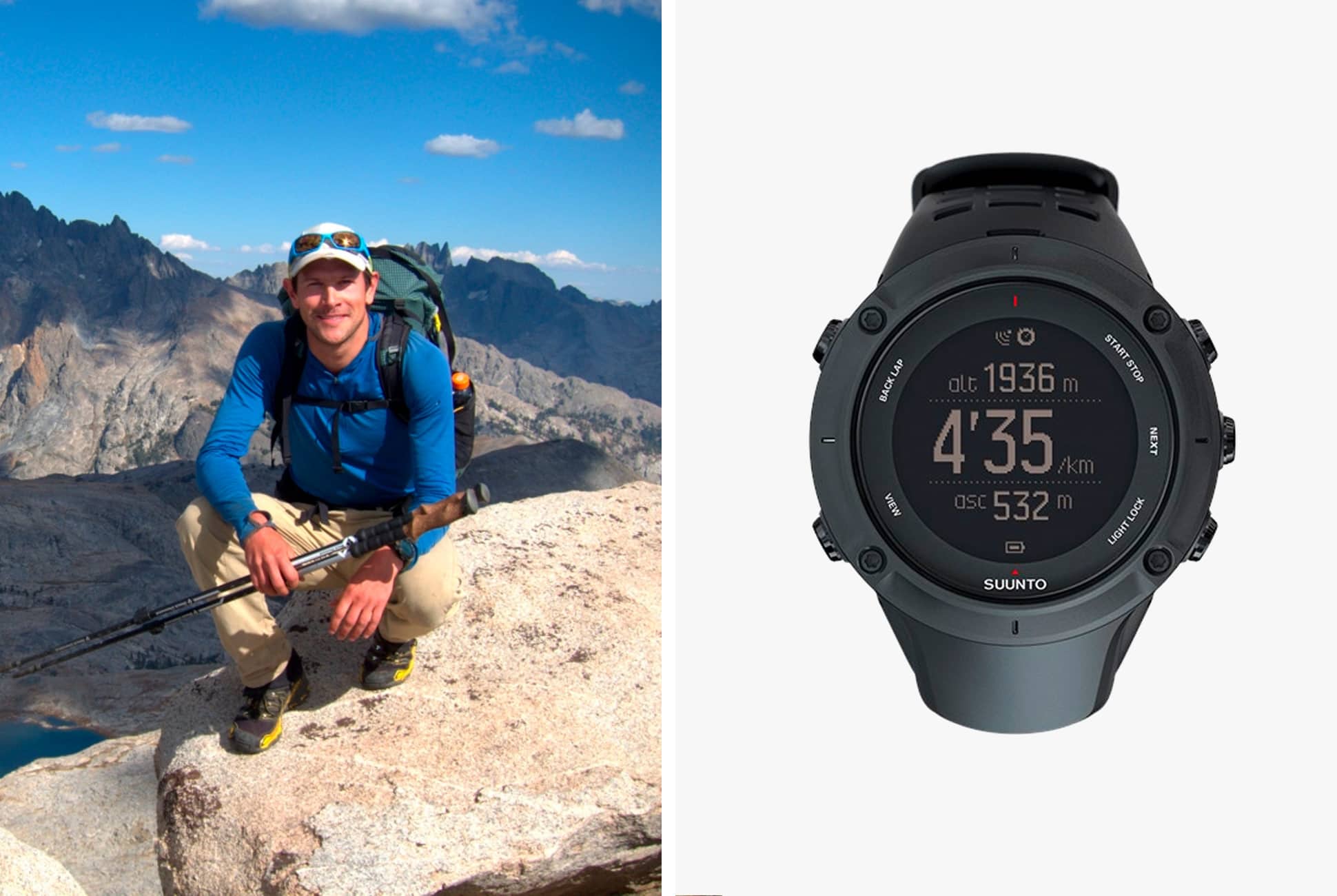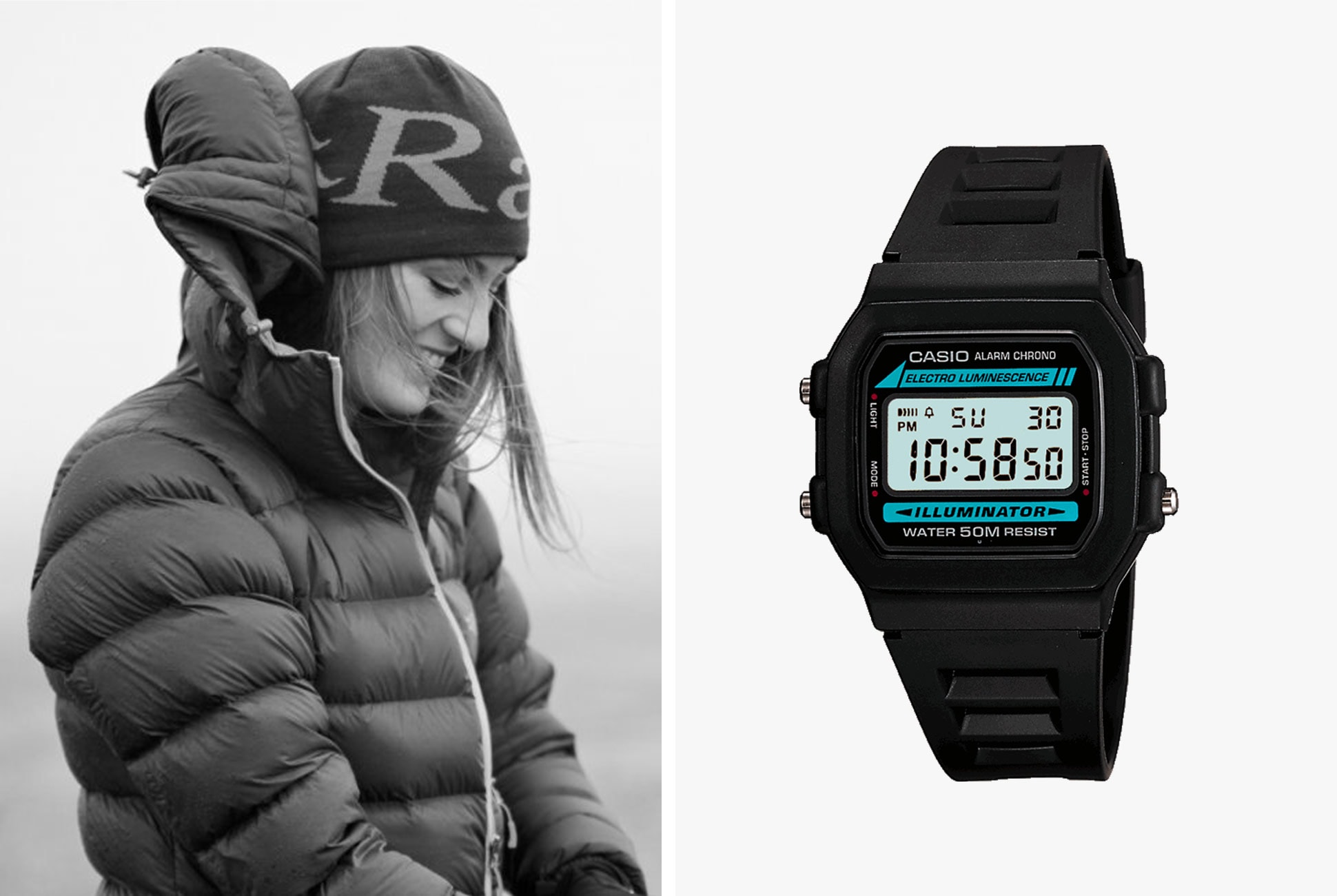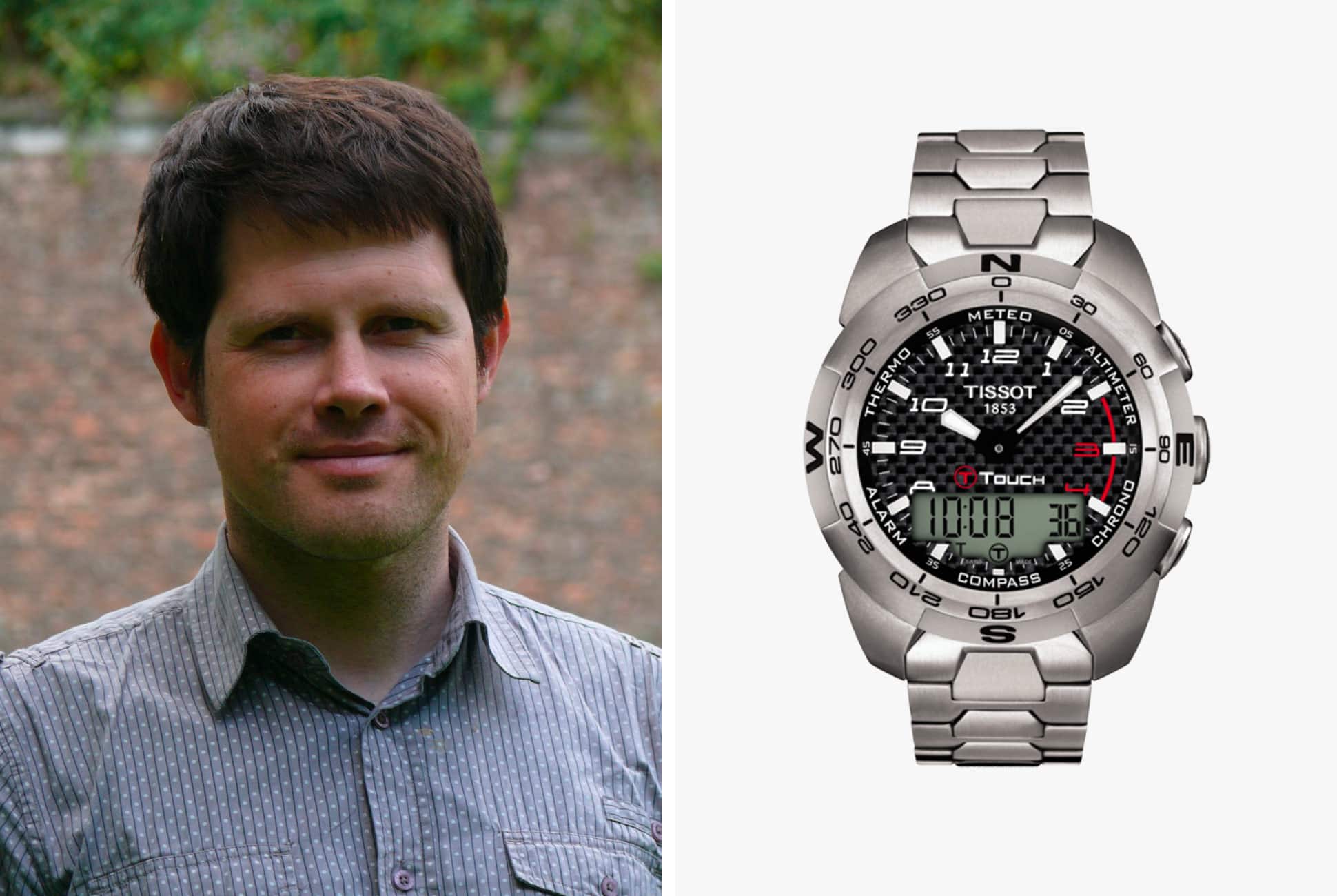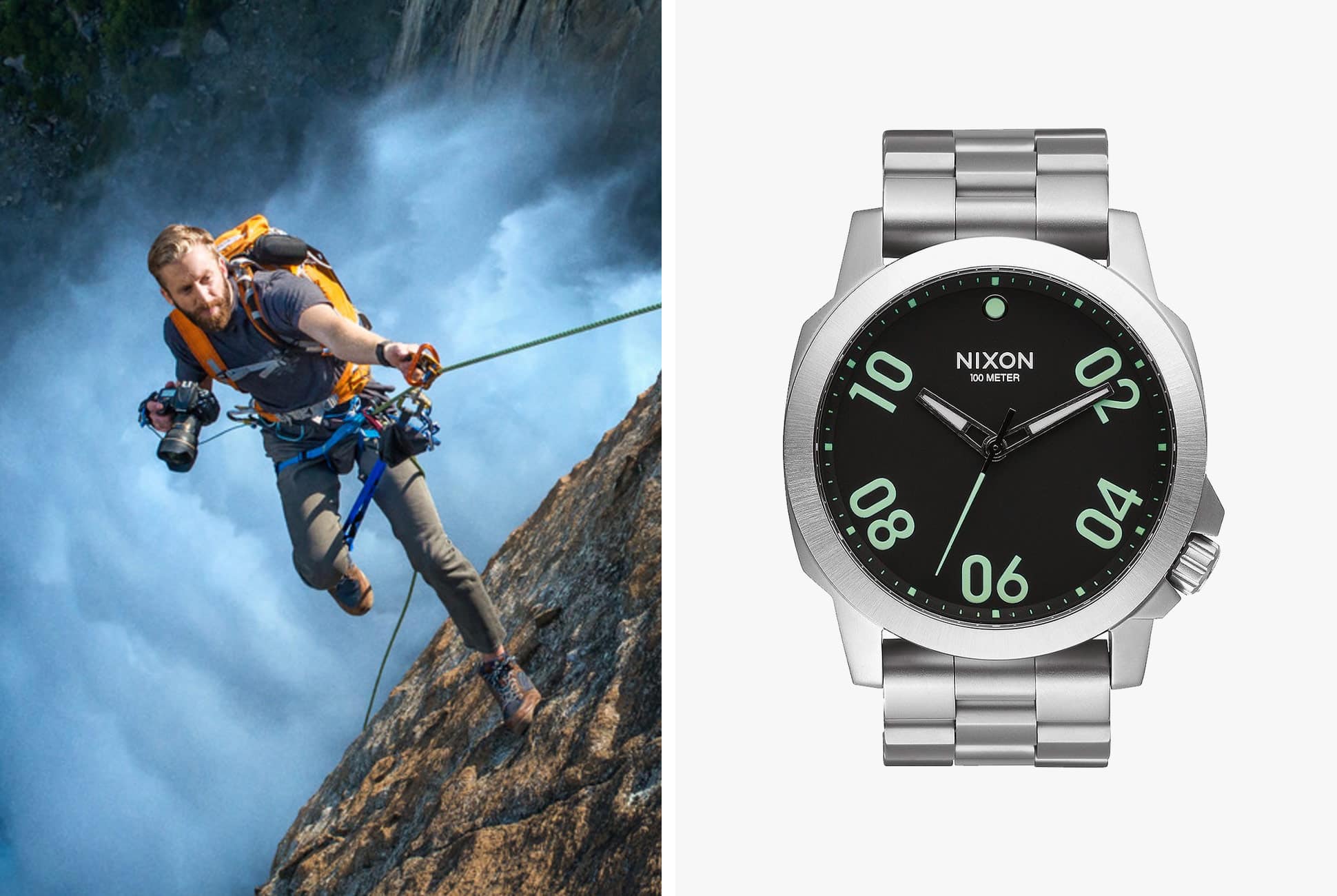You could argue that in the age of the smartphone, the daily utility of a wristwatch has been severely curtailed, but if there’s one area in which the watch has always proven to be a vital companion, it’s on the wrists of outdoor adventurers and explorers. Indeed, any bright-eyed watch enthusiast could enthusiastically recount the story of Sir Edmund Hillary’s Rolex, Buzz Aldrin’s Speedmaster or the Jaeger-LeCoultres used during the Geophysical Year. Time doesn’t stop on mountain peaks, in space, or at the poles, after all.
But as watch technology evolves, the watches that today’s explorers use look very different than the ones worn by adventurers from the 20th century. Of course, you’re bound to get the occasional analog holdout, but for the most part, many outdoorsy folks seem to be capitalizing on smartwatches and digital watches that expand their functionality well beyond simply telling the time, opting for timepieces that can log data, function as thermometers and serve as compasses. So we reached out to four prominent modern-day explorers get their two cents on the watches they like to wear in the wilderness and how they’ve proven indispensable during their exploits.
Andrew Skurka: Sunnto Ambit3 Peak

Photo: Andrew Surka
Andrew Skurka is a backpacker and ultrarunner with two massive (and we mean that literally) firsts under his belt: hiking the 6,875-mile Great Western Loop — which passes through the Mojave Desert, Sonoran Desert, 12 National Parks and 75 wilderness areas — and the 7,778-mile Sea-to-Sea Route between the Atlantic and Pacific Oceans. In 2007, National Geographic Adventure named him “Adventurer of the Year,” calling him a “a Gen Y version of Henry David Thoreau or John Muir.”
Q: Which watch do you wear and why did you choose it?
A: The Suunto Ambit3 Peak. I was given the earlier version of this watch, the Ambit2, by Suunto, but liked it so much that I thought it was worth upgrading to the next gen. The Ambit3 Peak has all the features and specs that I want, and the price is relatively reasonable.
Q: What functions come in handy during your expeditions?
A: It’s excellent for both backpacking and trail running, which are my two main sports. It’s also good for cycling, though I don’t use it for that. It’s a GPS watch, and can track my pace, distance, and vertical of any run or hike. It actually goes deeper than that. For example, it can track my real-time pace, average pace, and lap pace; and my ascent, descent, altitude, and vertical speed, i.e. vertical feet gain or loss per minute. With an optional heart rate monitor or powder meter, it can grab that data, too.
While backpacking, the watch saves me from having to manually dead-reckon — in other words, approximate location based on time hiking and estimated speed — because it tells me the distance from my last landmark/lap. And it tracks my vertical and altitude, which are both useful. When trail running, it helps me to govern my pace — especially in ultras — and to track my training.
Q: Do you have any specific moments when the watch came in handy during a trip?
A: There was not one specific moment where the Ambit3 Peak has been more valuable than any other. But like I said above, in an ultra it can really help to govern pace early on (because it’s really easy to start too fast in an ultra). And when backpacking it really helps me to navigate, because I know my distance from some earlier landmark and I know my altitude.
Laura Bingham: Casio W-86-1VQES

Photo: Laura Bingham
Laura Bingham is an English adventurer whose accomplishments include sailing the Atlantic, biking across South America from east to west (a 4,350-mile undertaking accomplished in 164 days) and, most recently, leading the first-ever descent of the Essequibo River in Guyana.
Q: What watch do you wear and why did you choose it?
A: My husband [Ed Stafford] walked the Amazon with a Casio watch, and I was planning my last cycling expedition and he said I should get a Casio watch, so no other watch was going to be an option for me because you can get it for like 12 pounds here. It’s so cheap so it means that if it does break — which it never does — you don’t need to worry about it. It’s indestructible, which is the number one need you have. You can set an alarm, if you get a backlit one you can tell the time at any point in the night, and it’s waterproof so you can dive into the water at any point and not worry about it at all.
Q: What functions come in handy during your expeditions?
A: Basically on an expedition it’s got to be indestructible, and the backlight is amazing because if you’re hearing noises or concerned and it’s dark in the middle of the night you can turn it on and see what time it is, and being able to time things and be conscious of time on a mission is invaluable — it can be life-saving.
Q: Do you have any specific moments when the watch came in handy during a trip?
A: Thankfully we haven’t had any harrowing moments, but there was one specific memory during our Essequibo expedition where Pip [Stewart] woke up with this horrid scream, and we thought she had been taken by a jaguar. Thankfully, she just dreamed that she had been attacked by a jaguar, and just as it pounced on her in her dream, something fell out of her hammock pocket onto her which made her think she was being attacked. So I jumped out of my hammock, I gave her a hug, and getting back into the hammock I remember thinking “what the fuck, what time is it?” then doing that backlit thing and seeing it was past two in the morning and going “oh my god.” It’s kind of comforting just waking up in the middle of the night and you don’t really know where you are, you could be anywhere in the jungle, and always having that constant of knowing what time it is.
For that expedition, I bought the same watch for Vanessa [Knight] and Pip, and we pretty much gave all of our expedition stuff to the guides after we finished, and Vanessa was saying that her Casio watch and her machete were the two things that had to come back home with her because you check that all the time during the day, and it’s one of the biggest memories of how long you’ve been away for. You just attach so many memories to this little thing. And that watch, I’ve had for three years, and it’s still going strong, and I even wore it at our wedding.
Louis-Philippe Loncke: Tissot T-Touch Expert

Photo: Peter Potrowl
Known as the “Mad Belgian,” Louis-Philippe Loncke has a number of first under his belt, including the first unsupported crossing of the Tasmanian Wilderness, the first unsupported crossing of the Simpson Desert (from north to south) and, most recently, a crossing of Tasmania during the austral winter with no food or gas resupplies.
Q: What watch do you wear and why did you choose it?
A: I had several Swatch watches in the past. My last one was lost somewhere in Tasmania since 2007. I was bush bashing downhill a steep slope, fell a few times and a few hours later I discovered my watch was missing — the strap had broke. Since then, I never needed a watch for the time since I had it on my phone. On expeditions, though, I always wanted the TISSOT T-Touch, specifically the Expert model which has the temperature. After 7 years of trying directly to connect with the HQ sponsoring/athlete team, I never got TISSOT as a sponsor until 3 months ago; now I have it and I’m wearing it almost every day.
Q: What functions come in handy during your expeditions?
A: The watch is very sturdy and is my backup in case I lose my GPS and compass. Especially, today, most equipment we use require batteries to work, and sometimes those batteries fail. Therefore, a regular watch (not one with a screen and tens of functions) is something I can always trust and carry on me. Sometimes I used the compass while packrafting as it was faster to check than getting the GPS out and turning it on. Further, checking the time in the winter is super important because the night comes fast.
Q: Do you have any specific moments when the watch came in handy during a trip?
A: During my world first expedition across Tasmania in the winter, I had it on my wrist all the time. I only removed it to use it to measure the exact duration of the scientific tests I did for the research program “Decision under stress in extreme environments.”
Travis Burke: Sunnto Core, Nixon Unit Dive and Nixon Ranger 45

Photo: Travis Burke
Travis Burke is an influential adventure photographer — with clients ranging from Outside and National Geographic to Jeep and GoPro — whose work has taken him to some of the world’s most remote (and beautiful) locations.
Q: What watch do you wear and why did you choose it?
A: Because I do so many different activities, there are three watches that I go between on a regular basis: Suunto Core, Nixon Unit Dive, and the Nixon Ranger 45. Depending on what my plans are, whether I’m freediving, backpacking, paragliding, or traveling, I’ll pick whichever one makes the most sense. I normally bring two watches with me whenever I’m on an extended trip with multiple activities. I like the way that the information is displayed on each, and I love that each has multiple functions that I end up using at different times. The build quality on all three is also really solid.
Q: What functions come in handy during your expeditions?
A: I need durable, reliable gear when I’m on an adventure, especially when it comes to freediving and night photography. These watches (particularly the first two) allow me to access the information I need quickly, making them important pieces of gear in my kit.
Q: Do you have any specific moments when the watch came in handy during a trip?
A: On a recent trip to Indonesia, I would use the Suunto one day while trekking up a volcano and shooting night photos, and the Nixon the next while surfing and freediving in the ocean. Having access to sunrise, sunset times, temperature, altitude was a key part of having a successful trip. Another added benefit to these watches was having two time zones just a glance away while traveling, so that it was extra easy to communicate with friends and family back home.

